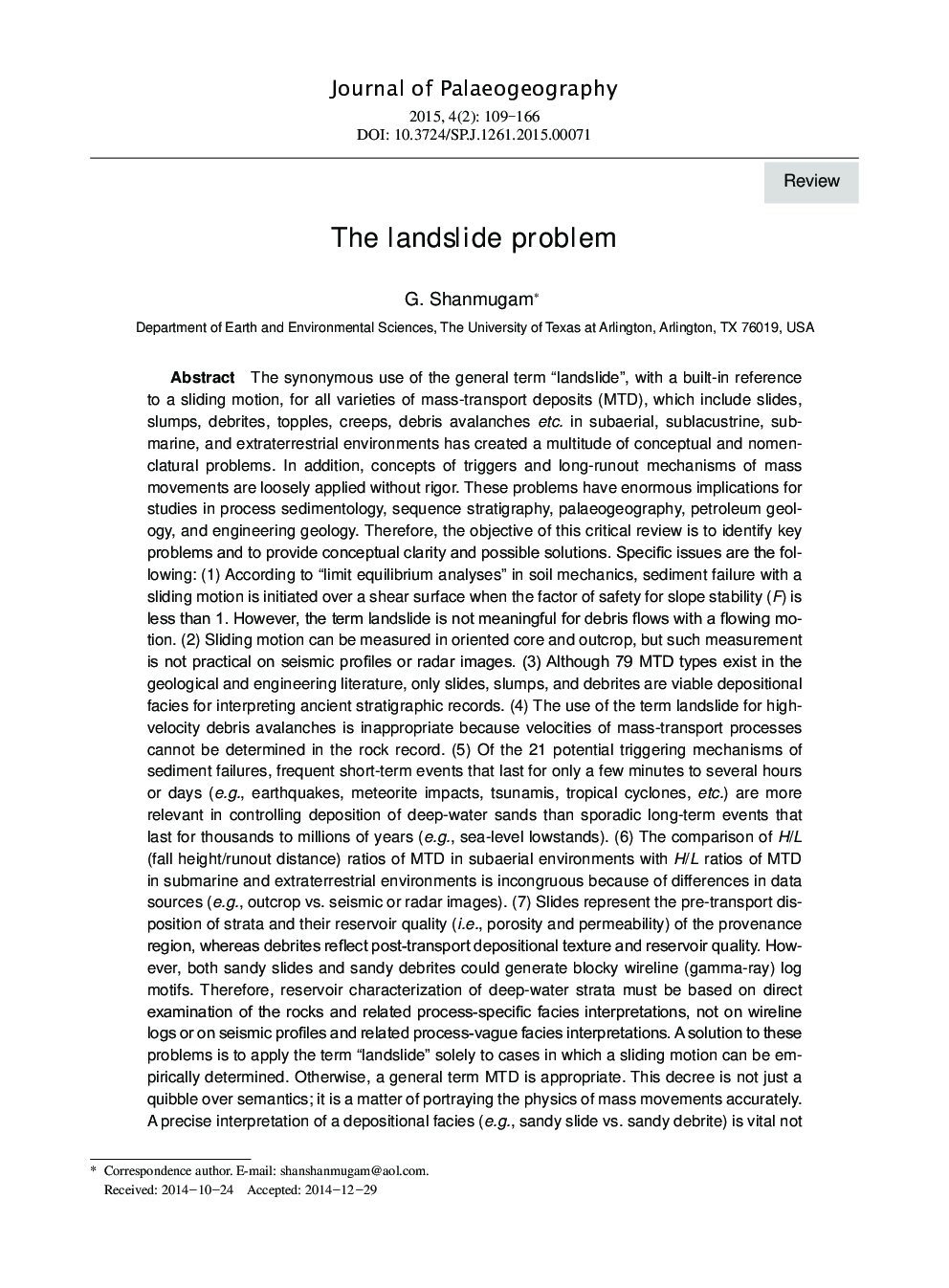| کد مقاله | کد نشریه | سال انتشار | مقاله انگلیسی | نسخه تمام متن |
|---|---|---|---|---|
| 4581009 | 1333673 | 2015 | 58 صفحه PDF | دانلود رایگان |
The synonymous use of the general term “landslide”, with a built-in reference to a sliding motion, for all varieties of mass-transport deposits (MTD), which include slides, slumps, debrites, topples, creeps, debris avalanches etc. in subaerial, sublacustrine, submarine, and extraterrestrial environments has created a multitude of conceptual and nomenclatural problems. In addition, concepts of triggers and long-runout mechanisms of mass movements are loosely applied without rigor. These problems have enormous implications for studies in process sedimentology, sequence stratigraphy, palaeogeography, petroleum geology, and engineering geology. Therefore, the objective of this critical review is to identify key problems and to provide conceptual clarity and possible solutions. Specific issues are the following: (1) According to “limit equilibrium analyses” in soil mechanics, sediment failure with a sliding motion is initiated over a shear surface when the factor of safety for slope stability (F) is less than 1. However, the term landslide is not meaningful for debris flows with a flowing motion. (2) Sliding motion can be measured in oriented core and outcrop, but such measurement is not practical on seismic profiles or radar images. (3) Although 79 MTD types exist in the geological and engineering literature, only slides, slumps, and debrites are viable depositional facies for interpreting ancient stratigraphic records. (4) The use of the term landslide for highvelocity debris avalanches is inappropriate because velocities of mass-transport processes cannot be determined in the rock record. (5) Of the 21 potential triggering mechanisms of sediment failures, frequent short-term events that last for only a few minutes to several hours or days (e.g., earthquakes, meteorite impacts, tsunamis, tropical cyclones, etc.) are more relevant in controlling deposition of deep-water sands than sporadic long-term events that last for thousands to millions of years (e.g., sea-level lowstands). (6) The comparison of H/L (fall height/runout distance) ratios of MTD in subaerial environments with H/L ratios of MTD in submarine and extraterrestrial environments is incongruous because of differences in data sources (e.g., outcrop vs. seismic or radar images). (7) Slides represent the pre-transport disposition of strata and their reservoir quality (i.e., porosity and permeability) of the provenance region, whereas debrites reflect post-transport depositional texture and reservoir quality. However, both sandy slides and sandy debrites could generate blocky wireline (gamma-ray) log motifs. Therefore, reservoir characterization of deep-water strata must be based on direct examination of the rocks and related process-specific facies interpretations, not on wireline logs or on seismic profiles and related process-vague facies interpretations. A solution to these problems is to apply the term “landslide” solely to cases in which a sliding motion can be empirically determined. Otherwise, a general term MTD is appropriate. This decree is not just a quibble over semantics; it is a matter of portraying the physics of mass movements accurately. A precise interpretation of a depositional facies (e.g., sandy slide vs. sandy debrite) is vital not only for maintaining conceptual clarity but also for characterizing petroleum reservoirs.
Journal: Journal of Palaeogeography - Volume 4, Issue 2, April 2015, Pages 109–166
